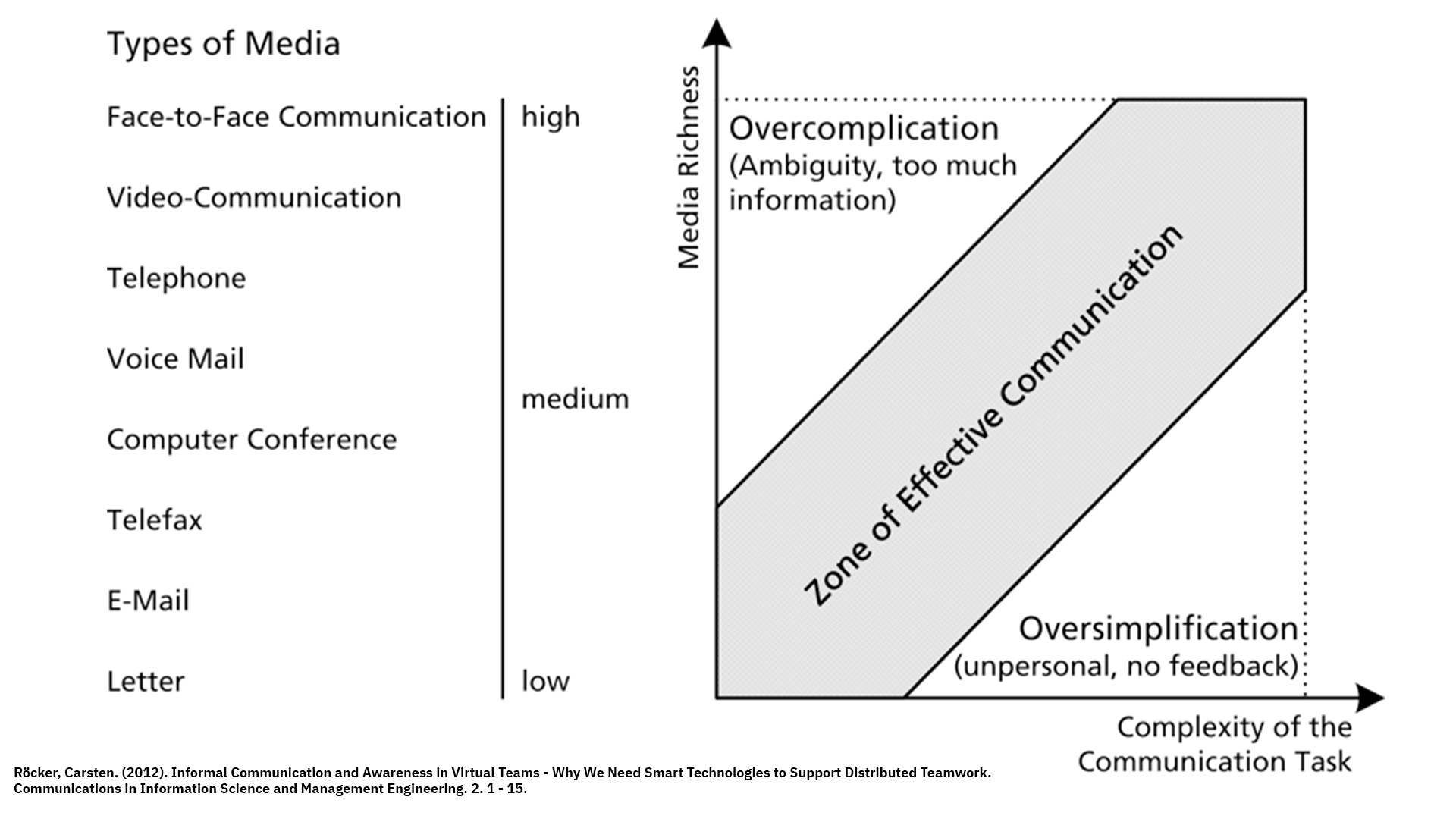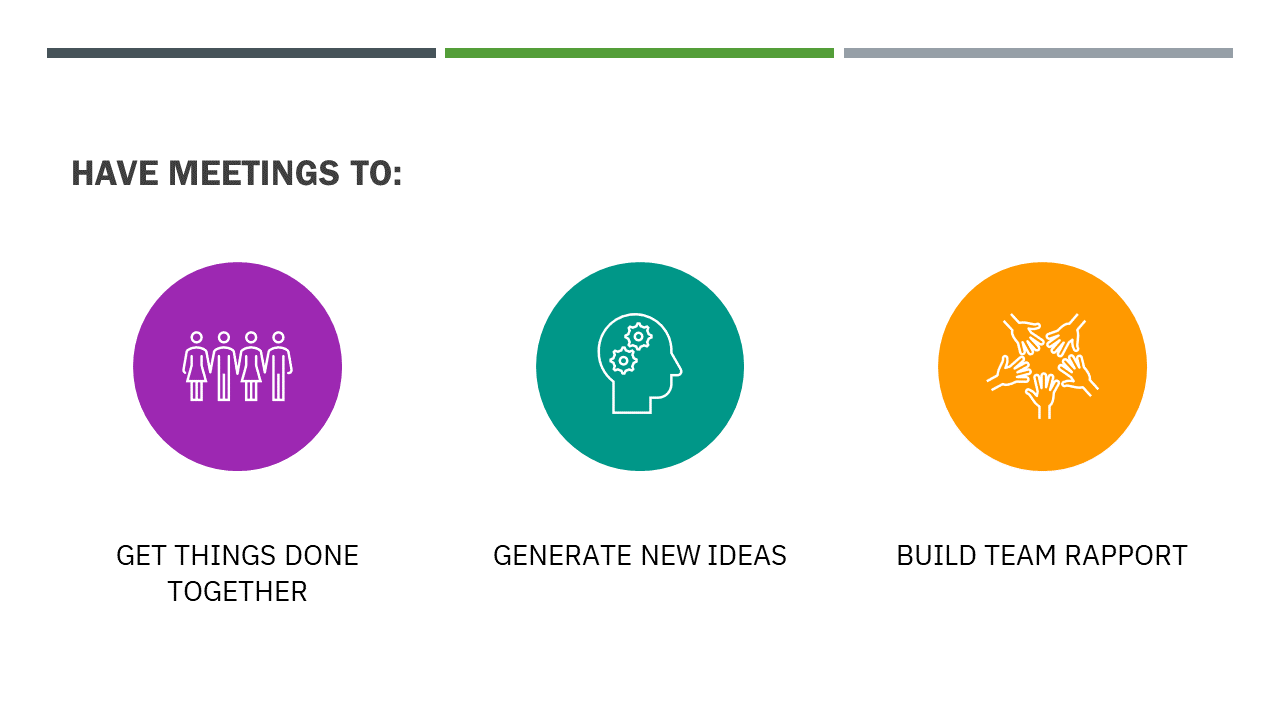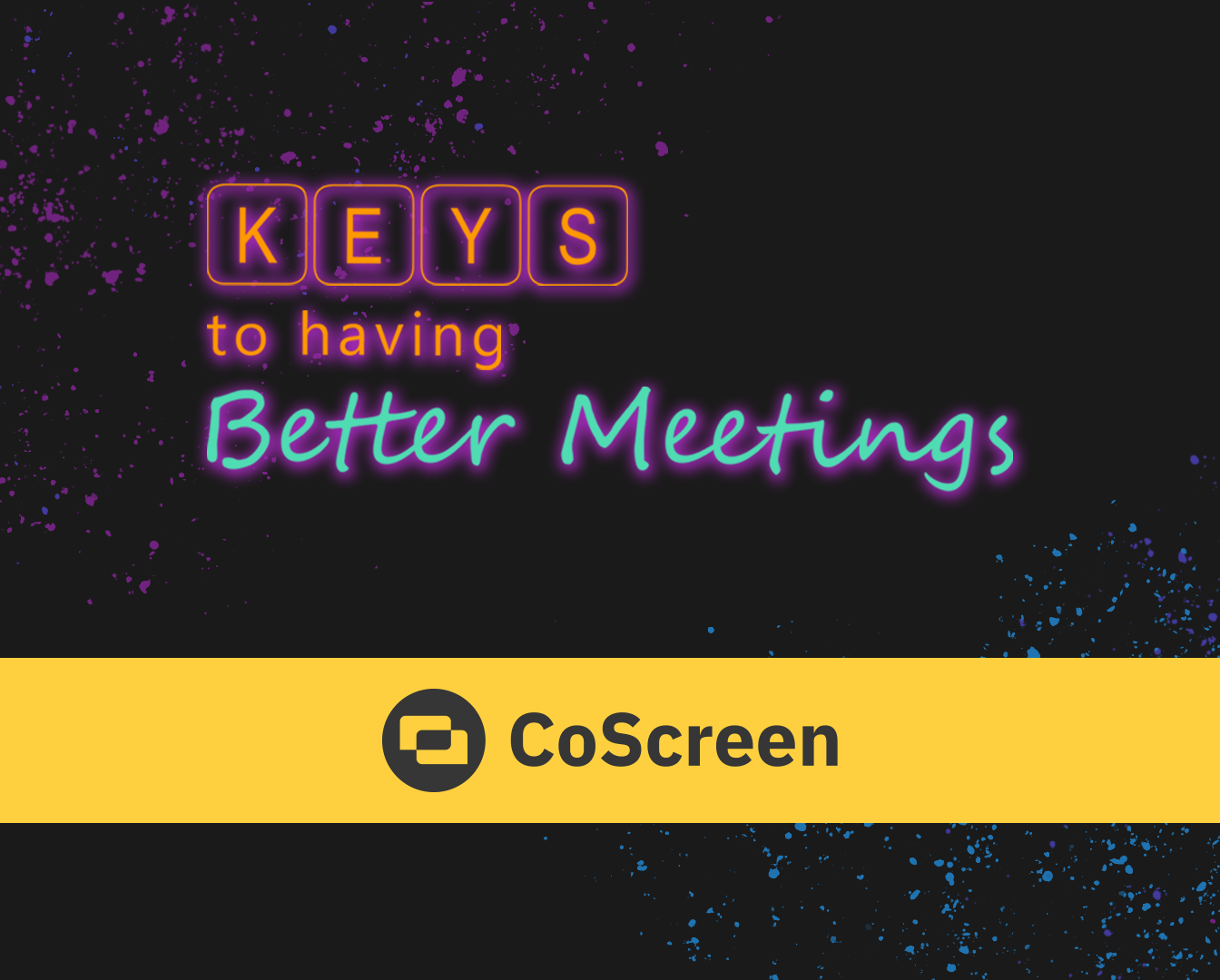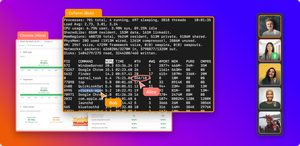Have you ever finished a meeting and said “that could’ve been an email?” Or maybe you’ve sat through a presentation that left everyone with more questions than answers, but no space for discussion. Most people know from experience that there are some things that are better suited for meetings than others, but it’s not always clear why.
Let’s talk about when to have meetings and what tools to use.
With more people working from home than ever before, a lot of the world has moved to a more asynchronous communication style. This makes sense, since people can share status, pull information when needed, post documents when they are ready, and continue to do their work without having to coordinate each action with the team or take turns doing things. Unfortunately, research also suggests that this has a negative impact on knowledge transfer and quality of output.
It’s clear that teams need both synchronous and asynchronous communication. Asynchronous communication channels (such as email) are better suited for conveying information and synchronous channels (such as video calls) are better suited for converging on the meaning of information.
Media richness theory says that the higher the complexity of the information being exchanged, the greater the level of synchronicity you need to communicate it. Similarly, using an overly-rich medium for simple information will reduce the effectiveness of communication -- and this is usually where people feel that “this could’ve been an email” feeling about a meeting.

So meetings should focus on things other than sharing information, and the channel used should depend on the complexity of the subject. This means you should have meetings when you need to 1) get things done together or 2) generate new ideas or 3) establish a sense of team/rapport. Let’s talk about each of these areas.

Since research shows usage of asynchronous communications hurts knowledge transfer, meetings are one of the best places to correct this.
Making specific, recurring time for collaborative meetings, such as pair programming, group code reviews, or design workshops can go a long way toward addressing some of the downsides of remote work. Rich tools that enable shared context, such as CoScreen, are great for this.
Meetings are also a great way to generate new ideas. Group brainstorming is more effective than individual brainstorming. Additionally, individual brainstorming is improved if it comes after a group discussion.
Specifically, when people can generate ideas continuously and maintain their own identity (see research), more novel ideas are generated than when simply pooling the ideas of individual group members. That means that the most effective kind of brainstorming is collaborative and synchronous.
When it comes to team building, meetings are one of the primary expressions of your company culture. They provide a chance for people to express and reinforce their values, and for leaders to present model behaviors for other employees.
Intuitively we know that it’s easier to work with people we know, and the more we understand how someone thinks and their strengths and weaknesses, the better the team will be. Casual things like team lunches might not seem complex at first, but they are better served by rich channels due to the amount of information encoded in social interactions. It’s hard to get to know someone over email.
Let’s review. We’ve determined that meetings are most effective when they are for converging on meaning rather than sharing information. Some of the best reasons to have meetings are for collaboration, generating new ideas, and building team rapport or reinforcing culture. Avoid meetings where one person will be presenting without discussion, and in cases where the information being discussed is not very complex.
So what can you do to improve your meetings? First, you should review your existing meetings and categorize them based on their purpose -- whether it’s sharing information, collaboration, brainstorming, or team building -- and the level of complexity of the information typically discussed. Once you’ve done that, look for opportunities to replace meetings that are for information sharing with things like recorded videos or emails. Also look for opportunities to add specific meetings for building team rapport.

Then, consider the tools you are using. Are you using video calls for everything? Is that the right approach, or is potentially reducing the effectiveness of communication? Are there new tools like CoScreen that you haven’t yet considered that might be better for some of the meetings you’re having?
Finally, don’t set recurring meetings far into the future; consider scheduling them one quarter at a time, and then review those meetings for effective communications when it is time to reschedule them. Be intentional about what’s on the calendar and remember that meetings are the manifestation of your culture.
Thanks for your time! I hope you’ve learned something, and that you’ll give CoScreen a look to see if it might be useful for your meetings.





